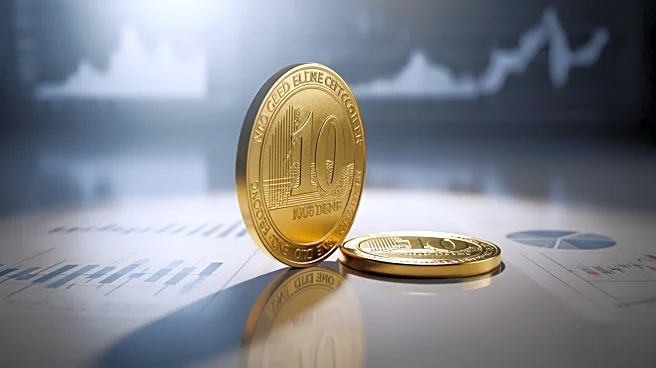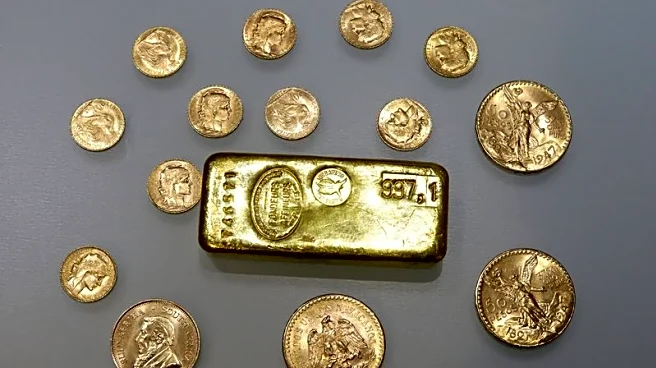What's Happening?
Gold has experienced a significant correction, with futures tied to the precious metal falling more than 1% on Wednesday, following a 5.7% plunge the previous day. This marks the worst daily performance
since June 2013, bringing gold about 8% below its record levels earlier this month. Despite this downturn, gold remains one of the best trades of 2025, with futures up approximately 54% year-to-date, outperforming the S&P 500's 14% advance. UBS Global Wealth Management strategist Wayne Gordon attributes the sharp correction primarily to profit-taking, noting that the decline was largely technical due to slowing price momentum and rising option volatility.
Why It's Important?
The correction in gold prices is significant as it highlights the volatility in the market and the impact of profit-taking by speculative investors. The debasement trade, where traders move away from the U.S. dollar in favor of hard assets like gold, may be losing momentum, as evidenced by the dollar index's recent rise. This shift could affect investment strategies and market dynamics, particularly for those relying on gold as a hedge against inflation and political uncertainties. The ongoing U.S. government shutdown and tariff-related risks continue to influence gold inflows, underscoring the complex interplay between economic indicators and commodity markets.
What's Next?
Market analysts are closely monitoring whether this correction signals a new trend or merely a temporary adjustment. The high realized volatility of spot gold relative to the S&P 500 suggests potential for further fluctuations. Investors and institutions may reassess their positions in gold, considering the persistent narratives of easing monetary policy, inflation risks, and political uncertainties. Central banks, well-stocked with gold, may also play a role in stabilizing or influencing future market movements.
Beyond the Headlines
The correction in gold prices may have broader implications for global economic stability and investor confidence. As gold is often seen as a safe haven asset, shifts in its value can reflect broader economic sentiments and geopolitical tensions. The interplay between gold and the U.S. dollar could also impact international trade and currency markets, influencing decisions by policymakers and financial institutions worldwide.












